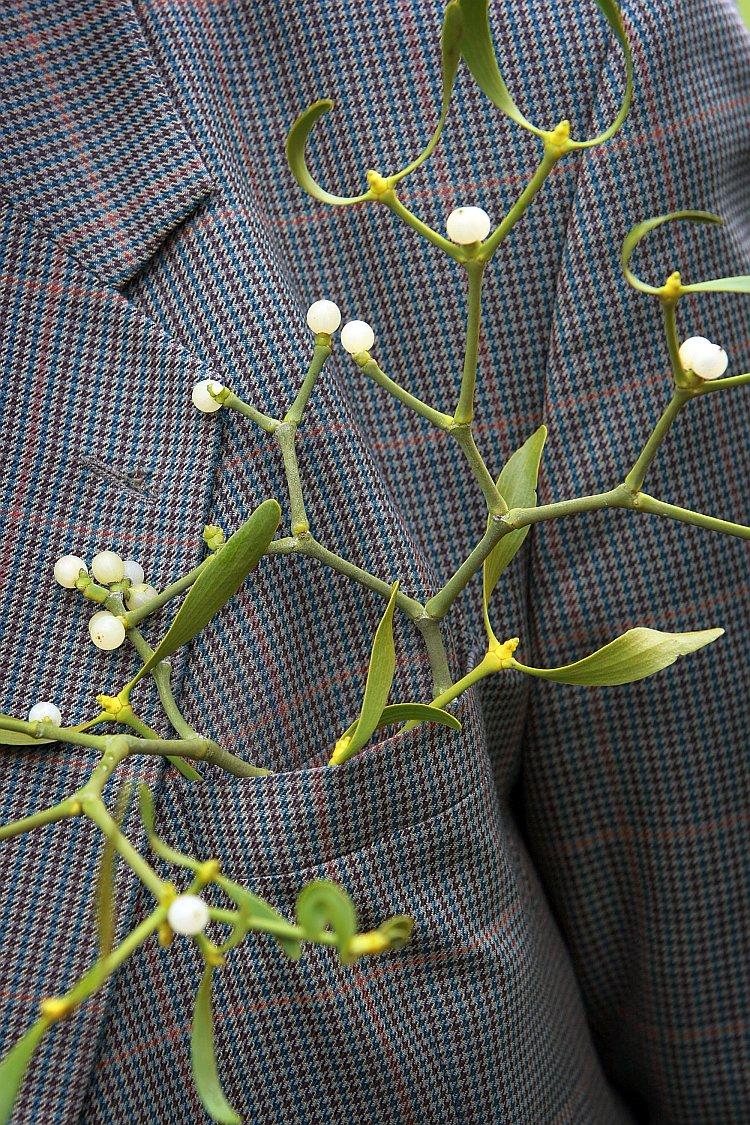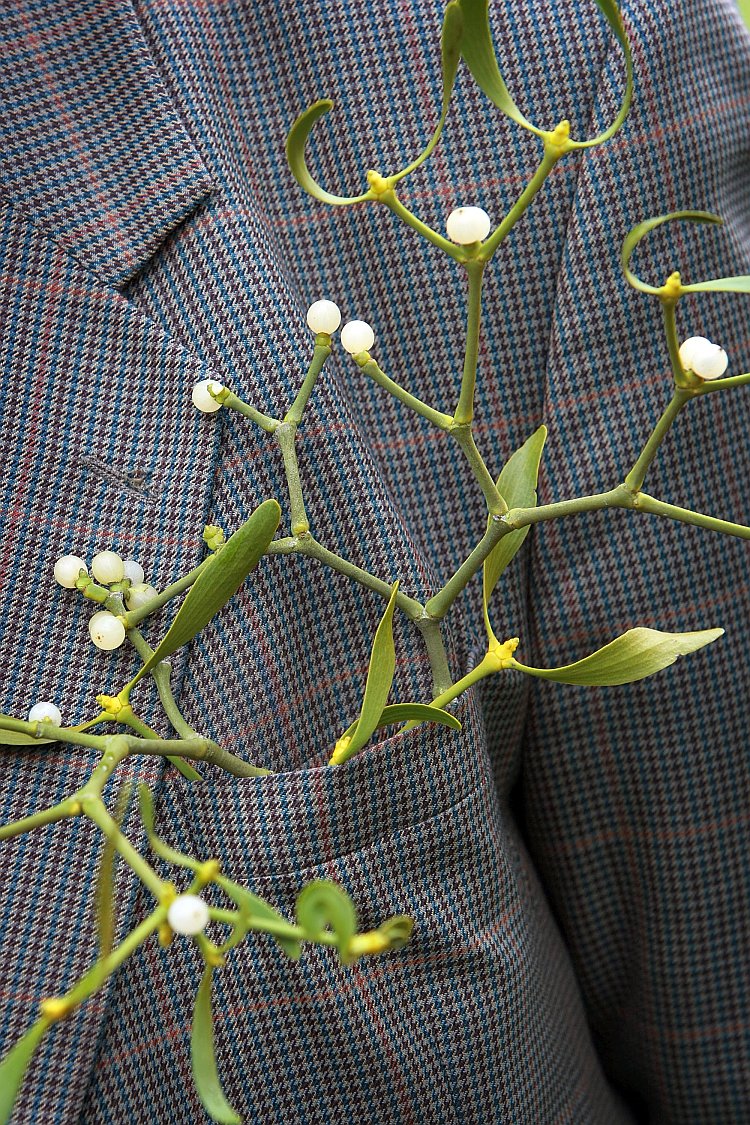While under the mistletoe, it is believed that you must kiss the person next to you as it bestows one with deep romance, lasting friendship and goodwill.
Mistletoe has been one of the most magical, mysterious and sacred plants of European folklore.
One of the legends of mistletoe is associated with the goddess Frigg. It is a sacred plant of Frigg, the goddess of love, who is the also the mother of Balder, the god of the summer sun. Because Balder had a disturbing dream about death, Frigg was alarmed; if Balder dies, all life on earth will die. So Frigg went to air, fire, water, earth and all animals and plant seeking their promise not to harm Balder. Balder had one enemy, the evil Loki, who knew of one plant that Frigg had overlooked, mistletoe. Loki made an arrow tip of the mistletoe and gave it to the blind god of winter, Hoder, who shot it and struck Balder dead. After his death, all things on earth and heaven wept for the sun god. None of the elements could bring Balder back to life for three days. Finally Frigg was able to restore his life. It was said that her tears turned into the pearly white berries on the mistletoe plant and in her joy, Frigg kissed everyone who passed beneath the tree on which it grew, blessing each of them with a token of love.
Here are some mistletoe fun facts courtesy of Smithsonian botanist Sylvia Orli:
The name “mistletoe” is derived from the Anglo-Saxon “mist” or “mistel” meaning dung and “tan” meaning twig or “dung twig”. Mistletoe seeds are spread by bird droppings. Birds also squeeze the seeds out before eating the berries when they wipe the seeds on branches. The seeds are sticky and they stay put on tree limbs until they sprout.
Mistletoe is a semi-parasitic plant, and it invades living branches of trees or bushes with a shallow root and absorbs food, minerals and water. It also produces its own food through photosynthesis in its leaves, which stay evergreen.
A tree or shrub heavily infested with mistletoe can be killed. Mistletoe is considered a pest in many areas of the world because of this. It lives in tropical and temperate areas, as far north as Britain and even Scandinavia, as the legend if Frigga implies. It is from the order of flowering plants known as Santalales. It is not entirely a pest, because mistletoe provides food and shelter for birds.
Of the 1300 species of mistletoe, the European mistletoe, Viscum album and Phoradendron serotinum, native to North America are the most common kinds sold during the Christmas holidays.






